What are kimchi substitutes, and where to find them? That is the question every kimchi lover has been tossing and turning in bed for. Not every vegetable dish can be a good replacement for kimchi.
The powerful smell, the vivid texture, and the unique taste are the things that make up the perfect kimchi. But kimchi supply and its ingredients are not abundant throughout the year. So what are the substitutes for kimchi?
Many dishes fill that void, ranging from pickled vegetables such as Sauerkraut and pickled cucumber to fermented foods and drinks such as Miso paste and kombucha.
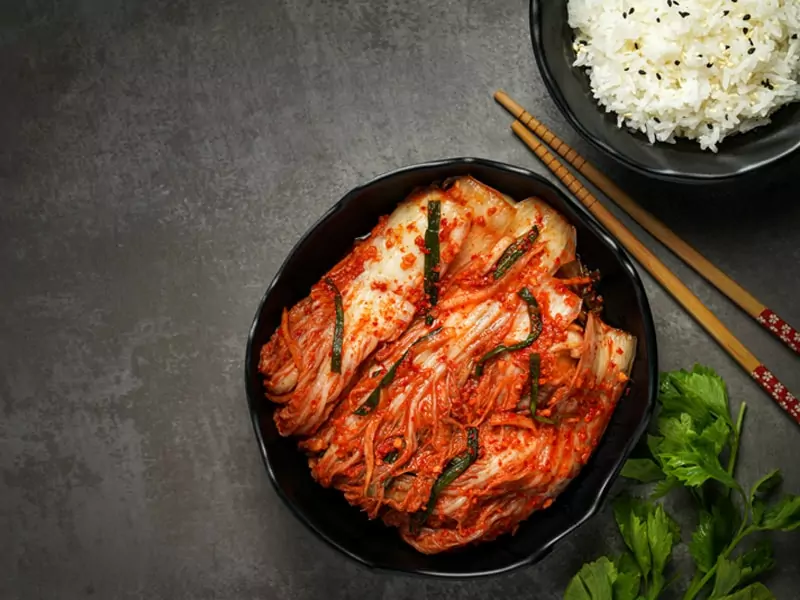
There are many kimchi counterparts that you can find in different cultures and countries. Here are some recommendations that you can try.
1. Pickled Beets
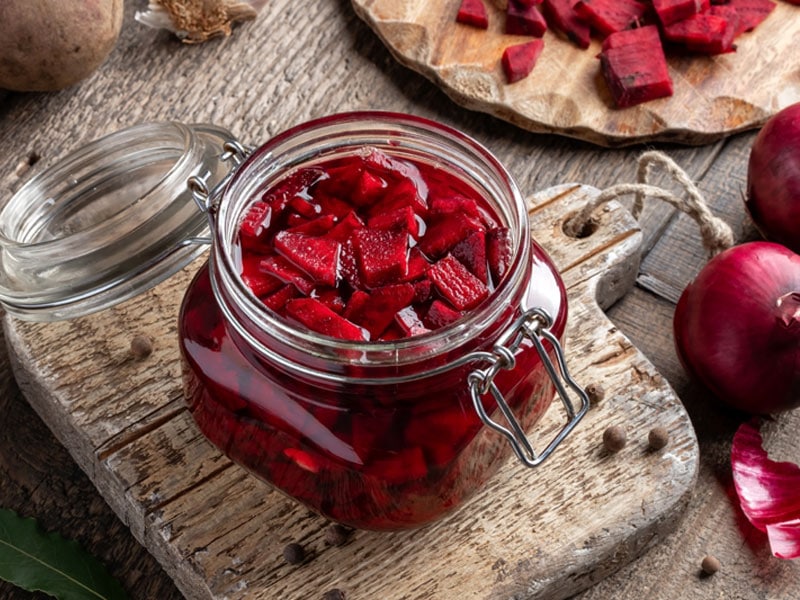
Pickled beet is your answer if you’re looking for a dish with less spiciness and a milder taste than kimchi. Beets also come with garlic and ginger, hinting at kimchi’s savory taste. Pickled beets are sweet and sour to enjoy on themselves.
You can use pickled beets as a side dish, add to salad, eggs, and hams, or eat them alone. The deep magenta will brighten up your dishes.
2. Radish Kimchi (Kkakdugi)
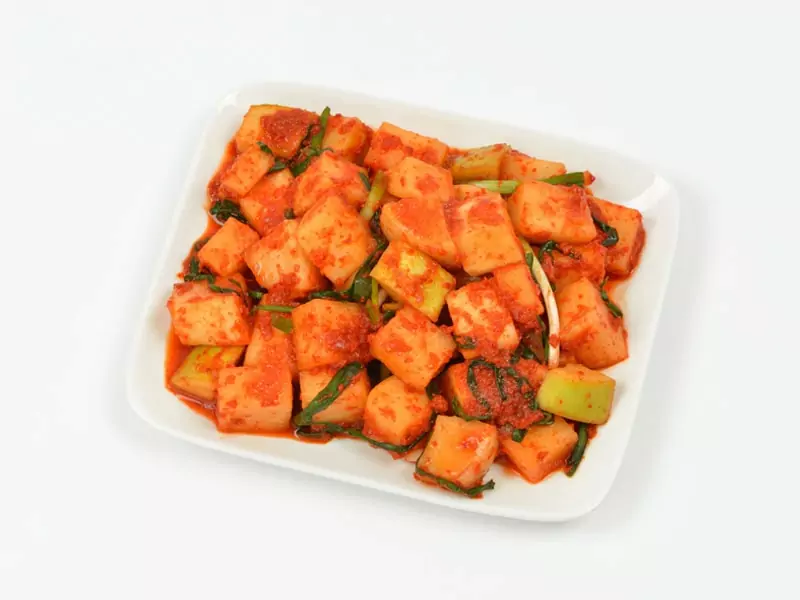
Kkakdugi is sweet, juicy, and even crunchier than kimchi. Due to having the same ingredients as kimchi, Kkakdugi has a similar taste of sour, umami, and tangy taste. The flavor will change in the fermentation process.
Kkakdugi comes with a creamy white color coated in a bright red.
3. Miso Paste
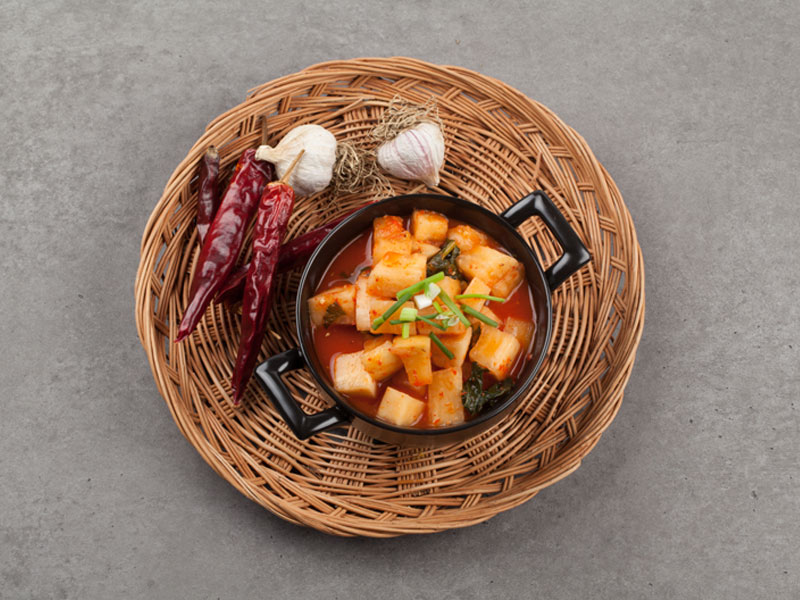
Miso paste is a traditional Japanese soybean paste. It is more of a seasoning ingredient than a fermented food. Am I out of my mind when saying miso paste is a kimchi substitute? Well, I have good reasons.
In case you’re looking for that fermented salty flavor from kimchi, miso paste is a surprisingly perfect mimic for the job. Miso paste doesn’t bring too many things like additional texture or nutrition for your main dish, but the resemblance with kimchi flavors is uncanny!
Miso paste is usually added to stews, soups, and sandwiches or used as a dip for steaks and BBQ.
4. Pickled Cucumbers
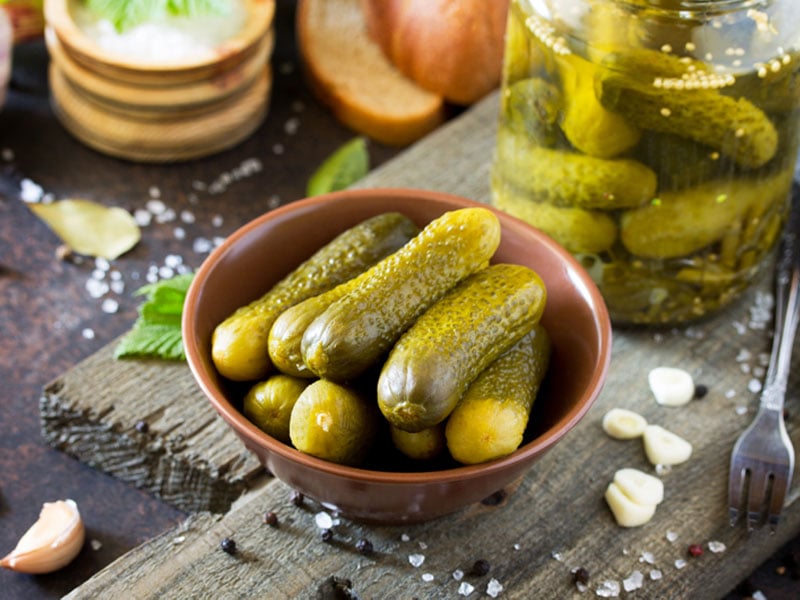
Let’s not forget the familiar pickled cucumbers. Pickled cucumbers are salty and sour, pretty much like kimchi. You can add Korean flavors, such as chilies, garlic, and fish sauce.
The crunchy and refreshing texture of cucumbers and rich spices flavors will remind you of kimchi. This dish can pair well with a hamburger, pizza, or rice. Pickled cucumbers come with yelloư green color.
5. Natto (Japanese Fermented Soybeans)
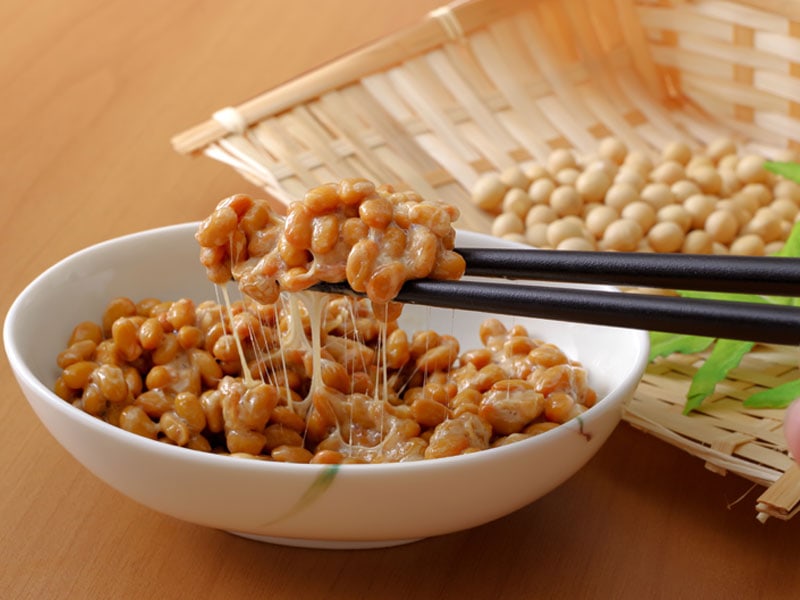
Natto is traditional Japanese fermented soybean similar to miso paste, but the beans are not mashed up like the mentioned condiment. The sour, sweet, and salty tastes are the same as miso paste. People often pair natto with rice, cheese toast, sandwich, soup, and omelets.
Note that natto has a bit of a nasty smell and texture. The taste resembles salty cottage cheese or foie gras (a French liver specialty). Some people may think of bacon but earthier when eating natto.
The stringiness, sliminess, and stickiness of natto always give you a gross feeling in your mouth if you’re unfamiliar with the dish.
Natto is also hard to find since it doesn’t attract a lot of sales because of its unique taste. It can be expensive because of its scarcity too.
6. Sauerkraut
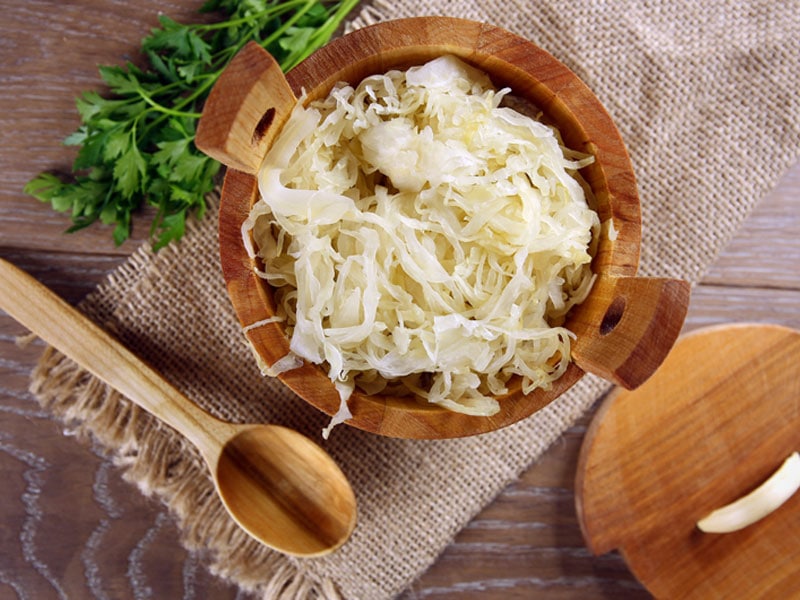
Sauerkraut may arguably be the best substitute for kimchi since it is fermented and made of cabbage, just like kimchi. Sauerkraut, or sour cabbage, is a traditional German side dish.
Although Kimchi and Sauerkraut are both made of cabbage, they have differences that you should know.
Unlike kimchi, in which napa cabbage leaves are cut in half, red or green cabbage in Sauerkraut is shredded into small pieces. Sauerkraut also comes with fewer ingredients and spices than kimchi. Thus its flavor is less complex and versatile.
The main flavors of Sauerkraut are salty and sour, so if you want it to be a bit sweeter and tangier, like kimchi, just add some sugar. Sauerkraut has a firm texture. A good Sauerkraut shouldn’t have a cloudy brine.
Fully fermented standard Sauerkraut has a pale white color, but the color may vary depending on the color of the used cabbage.
Sauerkraut usually goes well with soup, stew, sausages, smoked fish, and salted meats.
7. Tempeh (Indonesian Fermented Soybean)

Tempeh is not a dish. It is a special vegan ingredient that originated in Indonesia. Tempeh is like fermented Chinese tofu, with the soybean in the product remaining whole and forming a cake-like texture.
The main flavor of tempeh is savory and salty, along with a strong and nutty flavor. Tempeh tends to absorb the flavors of the foods or sauces base. In addition, you need to cook tempeh for consumption. People usually deep-fry tempeh for a better texture.
Tempeh can even go with sandwiches, curry, or salad.
8. Pickled Jalapenos (Pickled Mexican Chili Pepper)
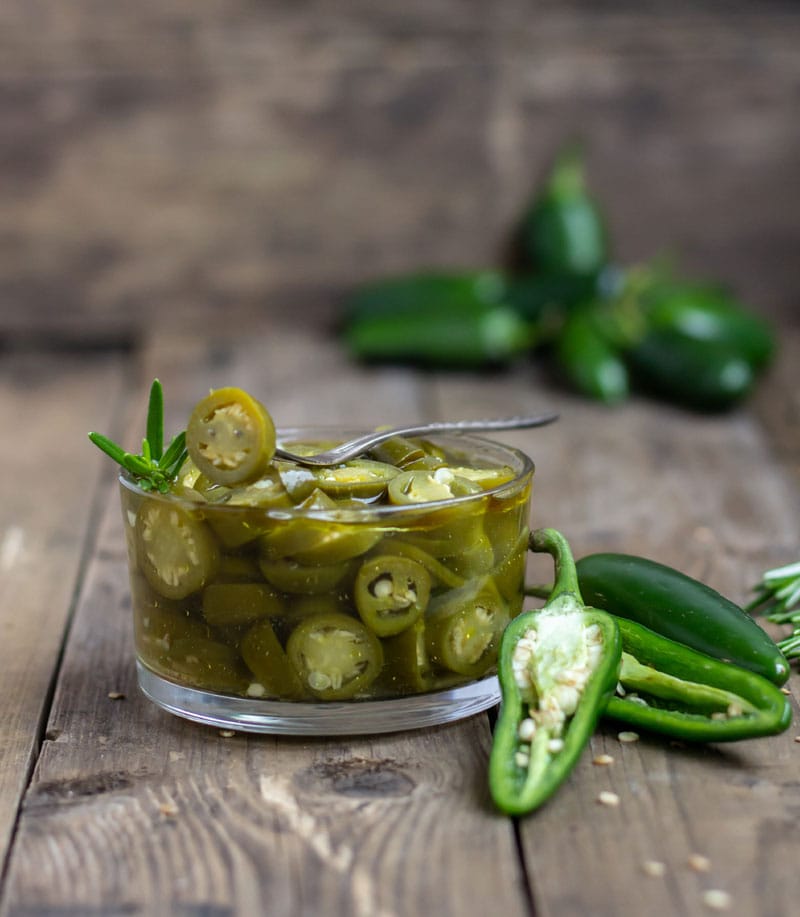
Maybe pickled jalapenos are the only worthy opponent of kimchi in terms of heat level. Jalapenos is a medium-sized chili pepper grown in Mexico. It is commonly picked while it’s still green. Pickled jalapenos have the same spiciness and sour taste as kimchi.
There are two types of pickled jalapenos: fermented Galapagos and pickled jalapenos.
The former has more similarities with kimchi. Because both have gone through the Lacto-fermentation process, Lactobacillus bacteria thrive and develop a lactic acid environment to preserve the mixture.
Without the fish sauce, pickled jalapenos lack the umami taste as kimchi has, but in terms of sourness and heat, they‘re equally the same. The dull green of pickled jalapenos adds more color to your dishes. Pickled jalapenos are pretty crunchy, but it’s softer than fresh jalapenos.
Pickles Jalapenos usually go together with pizzas, tacos, or barbecued meat.
9. Suan Cai (Pickled Mustard Greens)
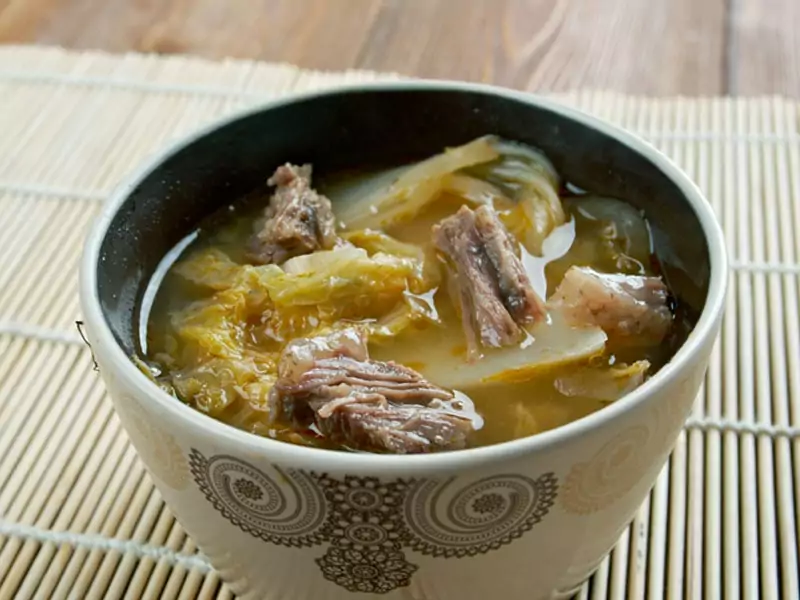
Suan Cai is a traditional Chinese pickled napa cabbage or mustard cabbage. You can say that Suan Cai is a hybrid of kimchi and Sauerkraut. Its ingredients are simple, like Sauerkraut, but the cabbage leaves are cut into big slices, similar to kimchi.
The fermentation time of Suan Cai is pretty long. It takes about 8-10 days or more to complete the fermentation. One thing that makes Suan Cai different from the rest of the fermented foods is that it requires a heavy object, like a big rock, placed on top of the cabbage to squeeze out the moisture.
Suan Cai is sour, not salty and usually comes in dark green. The dish pairs well with pork stir-fry, hot pot, or stew.
10. Fermented Drinks
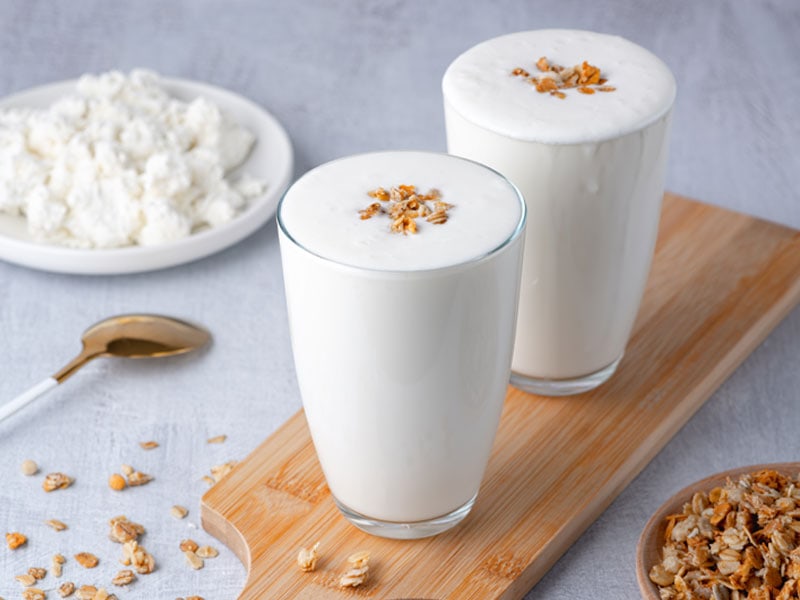
It may sound like an odd choice at first, but if you’re after some unique fermented flavor, then fermented drinks might be what you’re looking for. Thus, you may use the sour nature of fermented drinks as the base for your kimchi.
Two of the best-fermented drinks out there are Kefir and kombucha.
Kefir is a one-of-a-kind drink from the North Caucasus mountains, especially the Elbrus region. This fermented drink made from Kefir grains resembles a thin yogurt (ayran).
Kefir tastes sour, tangy, and creamy. It has a yogurt-like texture that is soft and smooth.
This drink has many variations. People often make Kefir by fermenting sheep, goat, or cow milk with Kefir grains. Kefir has a white color and sometimes a creamy white color. Furthermore, the longer it ferments, the darker it will get.
You can include this liquid in milkshakes, cereal, salads, smoothies, and soups. Adding Kefir to your stew or soup gives them a creaminess and fatty flavor.
Kombucha, or tea mushroom, is a sweet fermented black tea that originated in China. This drink uses a symbiotic fermentation process in which various microorganisms can thrive in symbiosis to ferment the product.
Basic kombucha tastes fizzy, sour, and a little sweet. Juice, fruits, and other flavorings are also added to diversify the flavor.
Kombucha has a pale or dark brown color and sometimes green depending on the kind of tea and ingredients. Dark tea will give your kombucha a darker scoby, while green tea brings a lighter scoby.
11. Homemade Kimchi
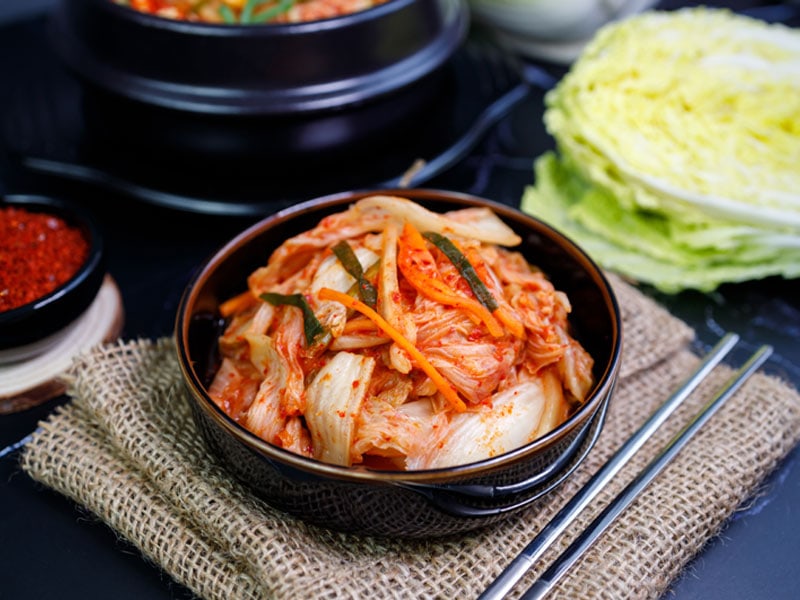
If your local stores are low on commercial kimchi supply and you don’t want any kimchi substitute, it’s not the end of the world. You can make your kimchi at home. Kimchi may look complex and sophisticated, but making kimchi is not rocket science.
There are 3 basic steps: salt, adding spices (garlic, green onion, and ginger), and fermenting your ingredients.
Making kimchi at home is not only fun but also more economical. Commercial kimchi products cost much more than their actual value because you have to pay for the time of fermentation as well.
12. Vegetable Pickles
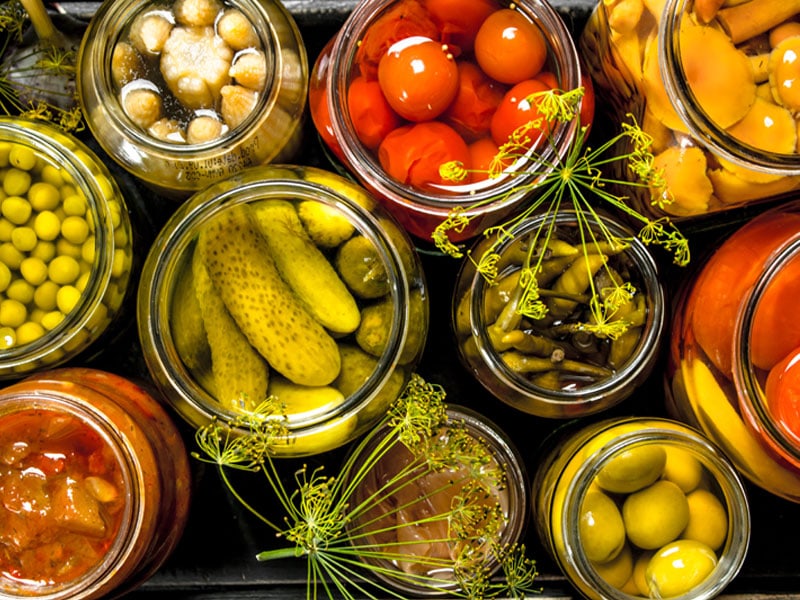
If you’re looking for other kimchi substitutes, you can use almost all kinds of vegetables for your pickles.
You can turn any vegetable into a kimchi variation with a kimchi recipe. Add more ingredients to enrich the flavor. Add chili powder if you want it to be spicy.
13. Gochugaru Mixed With Rice Vinegar
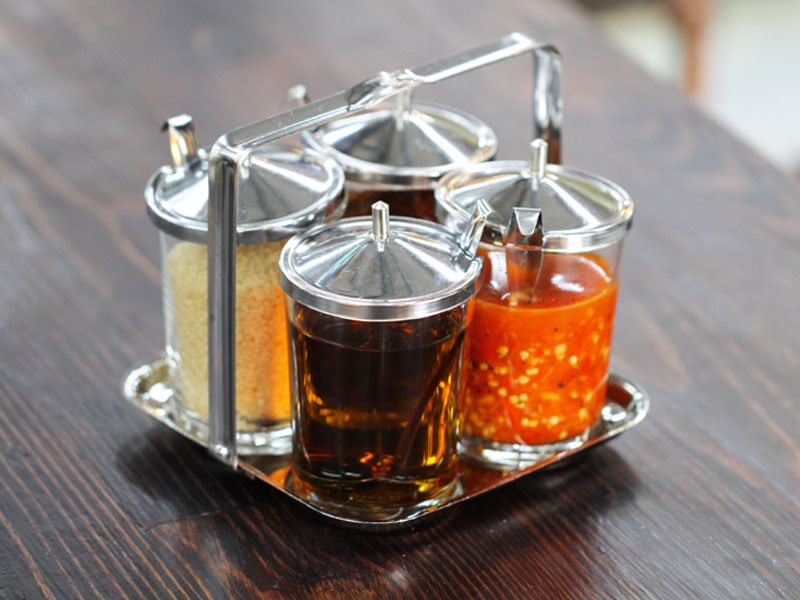
If you’re craving a kimchi flavor but don’t have sufficient ingredients at home. You can make the brine juice by mixing rice vinegar with gochugaru (Korean chili powder).
The mixture needs time to ferment to produce a tangy and fermented taste. Feel free to add more flavors to get closer to the taste of kimchi.
Why Do You Have To Find Kimchi Substitutes?
Kimchi is great, but you can’t quench your craving for this Korean staple dish every single time. Cabbage cannot always yield bountiful harvests, so the kimchi supply can run short due to shortage.
Alternatively, there are various dishes to pick from various regions worldwide to be in place for kimchi in your next meal. Don’t worry; fermented foods are widespread in many cultures and can substitute for kimchi.
Moreover, trying similar side dishes other than kimchi can widen your scope of cuisine culture and introduce you to alternatives as nutritious and tasty as kimchi.
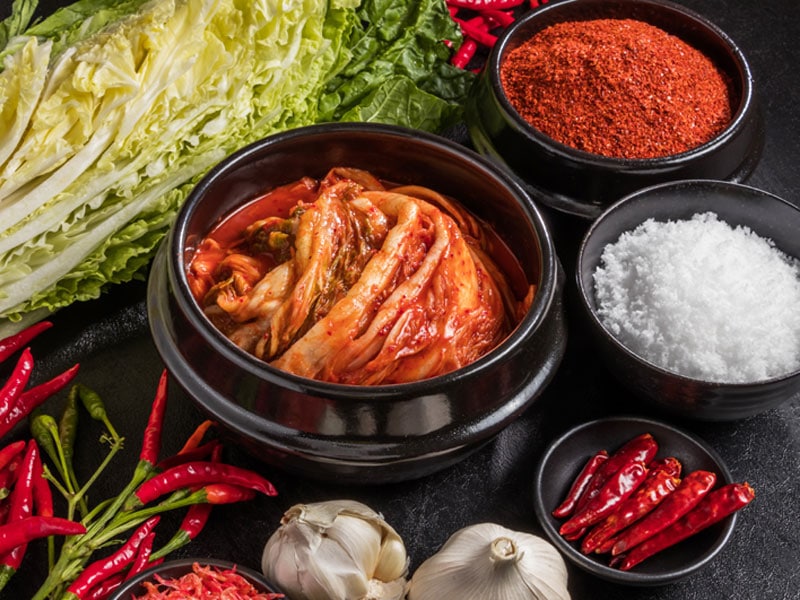
What To Expect In Kimchi Substitutes?
If you have tried all the recommended dishes above and want to find something different on your own, I have some tips for you to choose your own kimchi substitutes.
Flavor
First, that dish must be fermented food. You cannot just find a kimchi substitute without a fermented taste. That dish should come with a sour taste also (from vinegar or fermentation).
The sweet, spicy, and umami flavors are great bonuses. If you are looking for kimchi substitutes as condiments, they should pair well with stews or soups without conflicting with the main dish flavors.
Texture
If you‘re looking for kimchi texture-like dishes, you should know what kimchi feels like in your mouth. Overall, Kimchi is crunchy and crisp when you bite into it.
So, the same effect can be seen with vegetables like cabbage, beet, carrot, lettuce, onion, bell pepper, and broccoli.
Dishes That Go With Kimchi
Kimchi is a great addition to many dishes. Here is the list of dishes to go with kimchi that you can combine with your kimchi substitutes:
Burger
Adding kimchi to your burger is a Korean-inspired practice that has become a thing in many western countries. Kimchi will help balance out the burger’s greasiness and add so many flavors to every bite.
Soup
Adding kimchi to the hot soup will give it a spicy and sour flavor. Kimchi soup, like Dongchimi, is trendy in Korea. It keeps you warm in winter and provides you with the necessary nutrients.
Dumpling
Koreans usually refer to dumplings as Mandu. The dumplings pack kimchi, minced pork, and tofu inside. This dish can be eaten alone or with soy sauce. The mixture of kimchi, minced pork, and tofu will surprise your appetite at the first bite.
Fried rice
Kimchi fried rice usually goes with an omelet and bacon. In these recipes, people mix kimchi in the rice before drying it to intensify the kimchi flavor in the heat. This dish is common in Asian countries, and kimchi is added to balance the excess oil in the rice.
Try these amazing dishes with kimchi and feel for yourself.
Everything You Need To Know About Kimchi
There is no denying that kimchi is one of the most amazing foods Korean cuisine could ever offer. It is well-rounded in every way, whether health benefits, taste, or culinary usage.
Smell And Taste Of Kimchi
Kimchi is an acquired taste. Few people can eat it on the first try due to its pungent smell. The fermentation process has given kimchi a sour and fermented smell that can ward off many people. A hint of ginger, garlic, and hot pecan also can contribute to that. The smell of fermented seafood and fish sauce plays a role too.
About the taste, kimchi packs in itself a wonderful world of taste. The sourness from fermentation goes hand in hand with the chili pepper and garlic spiciness.
It also has the sweetness from sugar, honey, or pear to pair with the saltiness from salt brine, and the umami tastes from fish sauce.
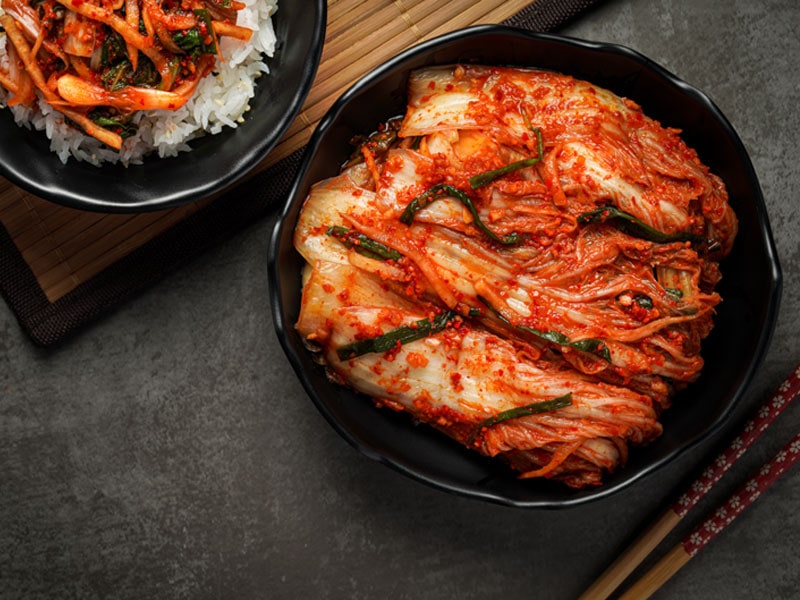
How Kimchi Is Made
Kimchi consists of a variety of ingredients. Standard kimchi has shredded cabbage, garlic, Korean chili pepper, green onion, ginger, fish sauce, sugar, and salt.
The making process of kimchi is quite straightforward. However, producing a quality batch of kimchi is not a piece of cake. Even when you strictly follow cooking instructions, your kimchi may not come out right. Therefore you should refer to these steps for more understanding.
Step 1: Salt-brining
The standard kimchi includes two simple steps only. Which are salt-brining and mixing the ingredients, then stuffing them in containers and letting the natural fermentation do God’s work.
It’s worth noting that the salt-brining step will decide the fate of your kimchi batch. In this step, you soak the cabbage in a salty brine. Too much salt will make your kimchi salty, and too little will make it soft and mushy.
Step 2: Fermentation
The fermentation time is also a matter of significant importance. Too short a time and your kimchi are under-fermented, resulting in shorter shelf life and lesser taste. Over-prolonged fermentation will make your kimchi sour. The perfect time is around 1 to 5 days.
There are many recipes when it comes to making kimchi. Kimchi is among the kinds of foods with so many variations: Oi Sobagi (cucumber kimchi), Dongchimi (Radish water kimchi), Ponytail radish kimchi, and kkakdugi (cubed radish kimchi) are a few examples.
Check out how you can recreate kimchi in your lovely kitchen.
FAQs
That’s all about kimchi substitutes. There are many more things you need to know to be a kimchi expert. Here are some FAQs for your knowledge:
Now You Know What To Do Kimchi Is Off The Menu
There are plenty of dishes that can replace that tangy, spicy, and fermented taste of kimchi. Sometimes you should try to think outside of kimchi and give other dishes a chance. You already knew what you needed from them!
There are plenty of kimchi substitutes out there for you to choose from. Don’t be afraid to try new dishes and enrich your cuisine culture.
Like and share this article for more content!


Jamie Scott
Editor in Chief, Senior Content Writer
Expertise
Home Cooking, Meal Planning, Recipe Development, Baking and Pastry, Food Editor, Cooking-video Maker, Western Food Evaluation Expert
Education
Le Cordon Bleu College of Culinary Arts
Local Community College, New York, NY
Jamie Scott is a skilled culinary expert and content creator specializing in Western cuisine. With over 15 years in the culinary field and formal training from Le Cordon Bleu, Paris, Jamie deeply understands how to blend nutrition with delicious flavors. His passion for cooking matches his commitment to making healthy eating accessible and enjoyable.
On Fifteen.net, Jamie brings a fresh perspective to classic dishes and beverages, offering readers insightful recipes, cooking tips, and a fresh view on meal planning that emphasizes taste, health, and simplicity.